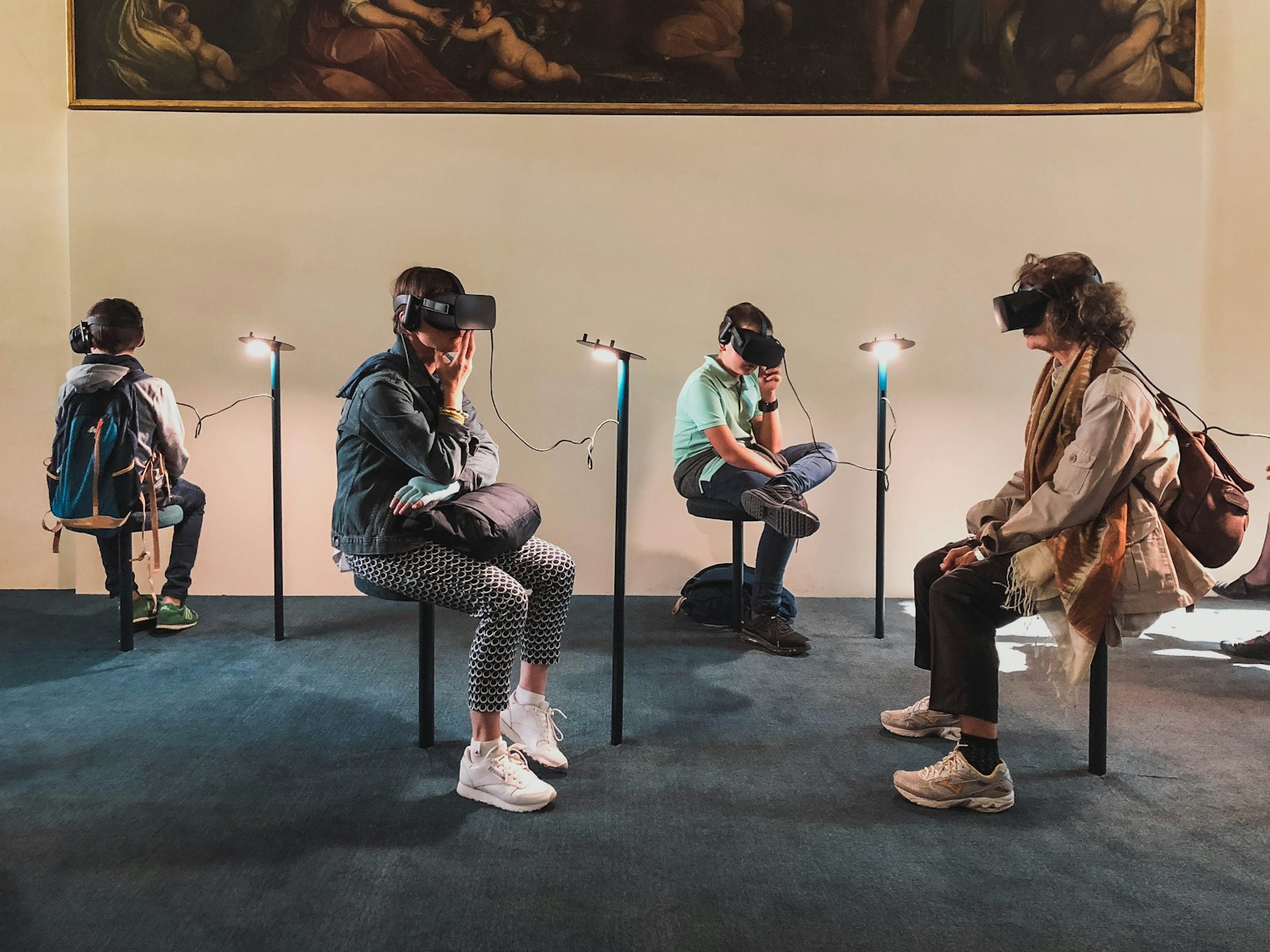Virtual reality (VR) technology has revolutionized the way travelers explore new destinations without leaving the comfort of their homes.
Through VR headsets, users can immerse themselves in realistic 3D environments and experience sights and sounds as if they were physically present. This provides a unique opportunity for travelers to preview potential destinations, allowing them to make more informed decisions before embarking on a journey.
One of the main benefits of virtual reality in travel exploration is the ability to visit inaccessible or remote locations with ease. Whether it’s exploring the depths of the ocean, scaling a towering mountain peak, or wandering through ancient ruins, VR technology breaks down physical barriers and grants users access to places that may be difficult or impossible to reach in real life. This opens up a world of possibilities for travelers, enabling them to satisfy their sense of wanderlust and curiosity in ways never thought possible before.
The Rise of Virtual Reality Technology in Tourism
Virtual Reality (VR) technology is rapidly reshaping the landscape of the tourism industry, offering unparalleled immersive experiences for travelers. As the demand for unique and interactive travel experiences grows, VR has emerged as a powerful tool for enhancing engagement and providing a glimpse into destinations from the comfort of one’s home. By leveraging VR technology, tourism companies can showcase their offerings in a dynamic and captivating way, attracting a new generation of tech-savvy travelers seeking more than conventional tourism experiences.
The integration of VR technology in tourism has opened up a world of possibilities for travelers, allowing them to explore destinations in a way that was previously unimaginable. From virtual tours of iconic landmarks to interactive cultural experiences, VR is revolutionizing the way people engage with travel content. As the technology continues to advance and become more accessible, the potential for its impact on the tourism sector is limitless, promising to create a more immersive and personalized travel experience for explorers around the globe.
Immersive Experiences Offered by Virtual Reality in Travel
Immersive experiences offered by virtual reality in travel transport users to far-flung destinations without leaving the comfort of their own home. Through advanced technology and stunning visual effects, users can explore majestic landmarks, vibrant cities, and natural wonders around the world in a truly immersive way. Virtual reality allows travelers to step into a different reality and experience the sights and sounds of a destination as if they were actually there.
Moreover, virtual reality in travel also provides unique opportunities for cultural immersion and understanding. By virtually visiting museums, historical sites, and local communities, travelers can gain insights into different cultures, traditions, and ways of life. This level of immersion goes beyond traditional travel experiences and broadens the horizons of individuals who may not have the ability to travel extensively.
Exploring Unreachable Destinations Through Virtual Reality
Virtual reality technology has opened up a world of possibilities for travelers by providing a virtual gateway to destinations that may have previously been considered unreachable. Through the immersive experience offered by virtual reality, individuals can now explore exotic locales, awe-inspiring landscapes, and culturally rich sites without ever leaving the comfort of their own homes. This groundbreaking technology not only allows for a visual feast of these destinations but also enables users to interact with their surroundings, providing a deeper level of engagement and understanding.
By stepping into the virtual shoes of a traveler, individuals can gain a firsthand perspective of destinations that were once beyond their reach due to geographical, financial, or logistical constraints. Whether it’s trekking through the Amazon rainforest, traversing the Great Wall of China, or diving into the vibrant marine life of the Great Barrier Reef, virtual reality offers a unique opportunity to broaden horizons and foster a sense of wanderlust. This innovative approach to travel exploration not only ignites a sense of adventure but also promotes cultural appreciation and environmental awareness, highlighting the transformative power of virtual reality in reshaping the way we perceive and engage with the world around us.
Enhancing Cultural Understanding Through Virtual Reality Travel
Virtual reality (VR) technology has revolutionized the way we experience and understand different cultures around the world. Through VR in travel, individuals can immerse themselves in cultural settings, allowing for a deeper appreciation and understanding of diverse traditions, customs, and beliefs. By virtually exploring historical landmarks, traditional ceremonies, or daily life in a foreign country, travelers can gain insights into the rich tapestry of global cultures.
VR travel experiences provide a unique opportunity for individuals to walk in the shoes of locals, breaking down barriers of misunderstanding and fostering empathy towards people from different cultural backgrounds. This immersive approach to cultural exploration not only educates travelers about the intricacies of various societies but also encourages respect and sensitivity towards differences. As we continue to harness the power of virtual reality in travel, the potential for enhancing cultural understanding and promoting cross-cultural communication becomes increasingly significant.

Virtual Reality: A Tool for Sustainable Tourism Development
Virtual Reality has emerged as a cutting-edge tool in the travel industry, offering innovative ways to promote sustainable tourism development. By providing virtual experiences of destinations, tourists can gain insights into different cultures and environments without physically traveling, thereby reducing their carbon footprint. This technology opens up new possibilities for travelers to engage with various destinations in a more sustainable manner, leading to a more eco-friendly approach to tourism.
In addition, virtual reality can help preserve fragile ecosystems and cultural heritage sites by minimizing physical visits while still allowing visitors to appreciate these locations virtually. This not only aids in the conservation of natural resources but also contributes to the protection and maintenance of important historical and cultural sites. Through the use of virtual reality, tourism stakeholders can work towards a more sustainable approach to travel that benefits both the environment and local communities in the long run.
Challenges Faced in Implementing Virtual Reality in Travel Industry
One significant challenge faced in implementing virtual reality in the travel industry is the high cost associated with developing and maintaining virtual reality experiences. Creating realistic and immersive virtual environments can require substantial financial resources. From acquiring the necessary hardware and software to hiring skilled developers and designers, the initial investment in virtual reality technology can be a barrier for many travel companies, especially smaller businesses operating on a limited budget.
Another obstacle in the adoption of virtual reality in the travel industry is the need for widespread consumer acceptance and demand. While virtual reality technology has gained popularity in recent years, there is still a segment of the population that remains hesitant or skeptical about incorporating virtual reality into their travel experiences. Convincing travelers of the value and appeal of virtual reality in enhancing their exploration of destinations can be a challenge for travel companies looking to integrate this innovative technology into their offerings.
Future Trends of Virtual Reality in Travel Exploration
Virtual reality (VR) technology is set to revolutionize the way we explore and experience travel in the future. As advancements continue to push boundaries, we can expect to see a surge in hyper-realistic VR experiences that transport users to destinations around the globe without leaving their homes. These immersive simulations will provide a sense of presence and engagement that goes beyond traditional travel mediums, offering a level of accessibility and convenience unlike ever before.
In addition to virtual tours of iconic landmarks and natural wonders, future trends in VR travel exploration may also focus on personalized and interactive experiences. Imagine being able to customize your virtual journey based on your interests, allowing you to delve deeper into specific aspects of a destination’s culture, history, or architecture. This tailored approach promises to enhance the overall travel experience, catering to individual preferences and curiosities in a way that was previously unimaginable.
Virtual Reality: A Game-Changer in the Tourism Sector
Virtual Reality has undeniably emerged as a game-changer in the tourism sector, revolutionizing how people explore and experience destinations. Through the immersive capabilities of VR technology, travelers can now step into a virtual world that transports them to exotic locations and cultural sites without leaving the comfort of their homes. This groundbreaking advancement has opened up a realm of possibilities for travelers, allowing them to embark on virtual adventures that were previously unreachable.
The impact of Virtual Reality in the tourism industry extends beyond just providing entertainment and escapism. It has become a powerful tool for destinations to showcase their unique attractions and cultural heritage to a global audience. By offering realistic and interactive experiences, VR enables travelers to gain a deeper understanding and appreciation of different cultures, traditions, and environments. This not only enhances the overall travel experience but also promotes cultural exchange and fosters a sense of interconnectedness among people from diverse backgrounds.
Tips for Making the Most of Virtual Reality Travel Experiences
To make the most of your virtual reality travel experiences, start by ensuring you have a comfortable and distraction-free environment. Choose a quiet space with ample room for movement, allowing you to fully immerse yourself in the virtual world. It’s important to adjust the VR headset properly to avoid discomfort and maximize the visual and auditory experience.
Additionally, take the time to explore different virtual reality travel apps and platforms to discover a wide range of destinations and experiences. Experiment with various modes of transportation, such as flying, driving, or walking, to tailor your journey to your preferences. Engage with the virtual environment by interacting with objects, people, and elements to enhance your overall immersion and enjoyment. Remember to take breaks as needed to prevent motion sickness and eyestrain, ensuring a smooth and enjoyable virtual travel experience.
